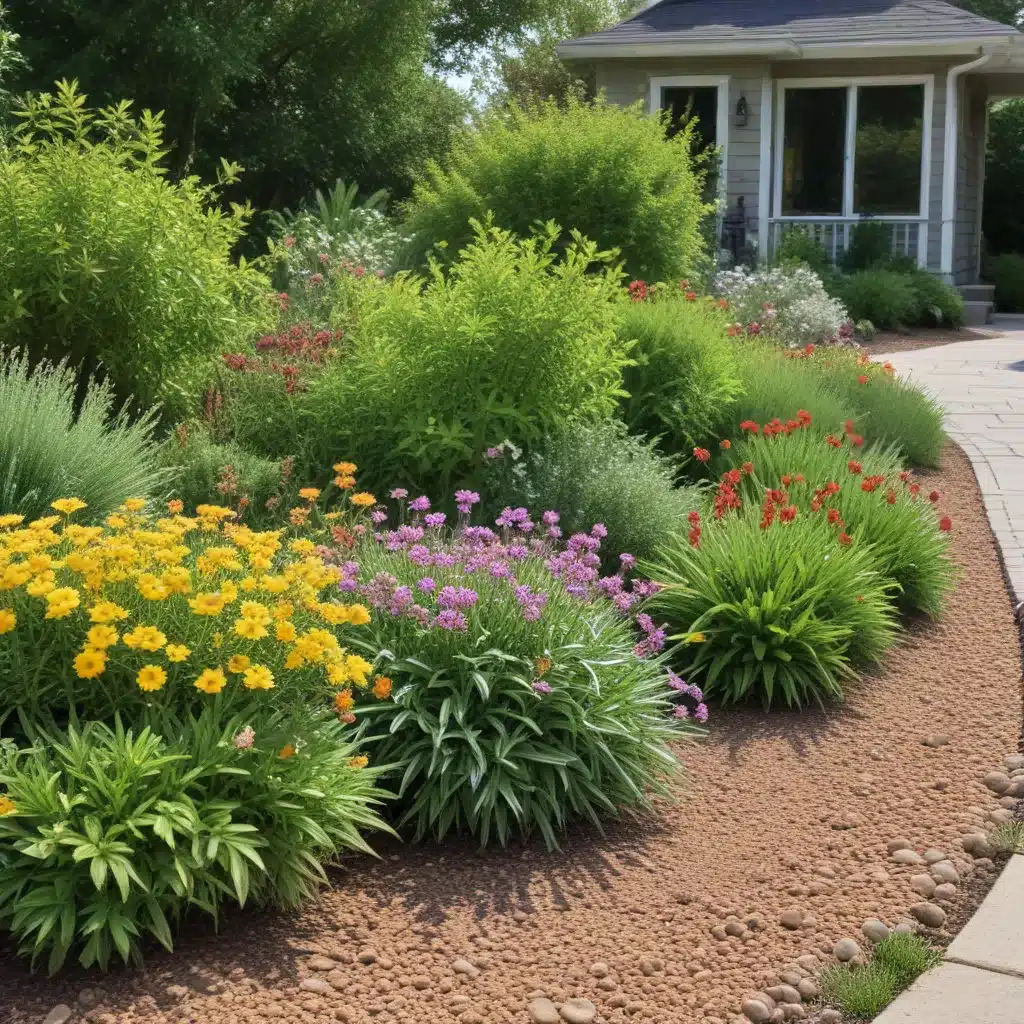
In the world of real estate, first impressions matter immensely. Potential buyers or tenants often form an opinion about a property within seconds of laying eyes on it. This is where curb appeal comes into play – the magical quality that entices passersby and captivates prospective occupants. And what better way to enhance curb appeal than with a lush, vibrant, and sustainable landscape?
Sustainable Landscaping Approaches
Sustainable landscaping, often referred to as eco-friendly or green landscaping, is more than just planting a few trees or installing an irrigation system. It’s about creating a harmonious balance between the natural environment and human habitation. As concerns about climate change, water scarcity, and habitat loss continue to grow, sustainable landscaping has emerged as a solution that resonates with both property owners and the planet.
Native Plant Selection
At the heart of sustainable landscaping lies the selection of native plants – species that have evolved to thrive in the local climate and soil conditions. These plants require less water, fewer chemical inputs, and less maintenance compared to their non-native counterparts. By incorporating native species into your landscape, you can reduce your environmental impact while creating a visually stunning and resilient outdoor space.
Soil and Water Conservation
Healthy soil is the foundation of any successful landscape, and sustainable landscaping practices prioritize soil health. Techniques like composting and mulching can improve soil structure, fertility, and water-holding capacity. Additionally, the use of drought-resistant plants and efficient irrigation systems, such as drip irrigation and rainwater harvesting, can significantly reduce water consumption and minimize waste.
Ecological Benefits of Native Plants
Beyond the aesthetic appeal, native plants play a crucial role in supporting local ecosystems. By providing food and shelter for a diverse array of native wildlife, including birds, butterflies, and beneficial insects, these plants help to maintain the delicate balance of the region’s natural habitats. This symbiotic relationship not only enhances the visual appeal of your landscape but also contributes to the overall health and resilience of the local environment.
Enhancing Curb Appeal with Native Plants
Sustainable landscaping can be a powerful tool for enhancing a property’s curb appeal and, in turn, its marketability and value. As more home buyers and tenants prioritize eco-conscious living, a thoughtfully designed sustainable landscape can significantly improve a property’s appeal and desirability.
Harmonious Design Principles
When incorporating native plants into your landscape, it’s essential to follow design principles that create a visually harmonious and cohesive outdoor space. This often involves a layered approach, blending groundcovers, shrubs, and trees to craft a multi-tiered design that is both beautiful and ecologically beneficial. By carefully selecting a diverse array of native species, you can showcase a stunning array of colors, textures, and forms throughout the year.
Seasonal Interest and Year-Round Aesthetics
Unlike non-native ornamental plants that may only offer seasonal interest, many native species maintain their visual appeal year-round. This provides a consistent and harmonious backdrop for ever-changing seasonal displays, ensuring that your landscape remains visually captivating and inviting throughout the year.
Increased Property Value
Properties with sustainable landscapes are often perceived as more valuable due to their lower maintenance costs, reduced environmental impact, and enhanced curb appeal. Furthermore, a well-designed native plant landscape can significantly improve a property’s resale value and lead to faster sales in a competitive real estate market.
Sustainable Maintenance Practices
Sustainable landscaping is not only about the initial design but also the ongoing maintenance practices that ensure the long-term health and vibrancy of your outdoor space. By adopting eco-friendly maintenance strategies, you can further reduce your environmental footprint and enjoy a low-maintenance, visually stunning landscape.
Reduced Lawn Areas
Traditional expansive lawns often require significant water, fertilizers, and regular mowing, contributing to a higher environmental impact. Sustainable landscaping encourages the reduction of lawn areas in favor of native plant-based gardens and groundcovers, which require fewer resources to maintain.
Integrated Pest Management
Sustainable landscaping embraces integrated pest management (IPM) practices that minimize the use of harmful chemicals. This approach prioritizes natural and organic methods of pest control, ensuring the safety of your family, pets, and the surrounding ecosystem.
Water-Efficient Irrigation
As mentioned earlier, efficient irrigation systems, such as drip irrigation and rainwater harvesting, play a crucial role in sustainable landscaping. These technologies help conserve water resources and maintain optimal soil moisture levels, reducing the strain on local water supplies.
Promoting Biodiversity and Habitat
Sustainable landscaping is not just about enhancing the visual appeal of a property; it’s also about contributing to the preservation of local ecosystems and promoting biodiversity.
Attracting Pollinators
By incorporating a diverse array of native plants, you can create a haven for pollinators like bees, butterflies, and hummingbirds. These vital creatures play a crucial role in the life cycle of many plants, ensuring the continued health and reproduction of the local flora.
Supporting Local Ecosystems
Native plants provide food and shelter for a wide range of native wildlife, from birds and insects to small mammals. By creating these wildlife-friendly habitats, you’re not only beautifying your property but also contributing to the overall ecological balance of the region.
Environmental Stewardship
Embracing sustainable landscaping practices is a testament to your commitment to environmental stewardship. By showcasing your dedication to eco-friendly principles, you can inspire your neighbors and the broader community to follow suit, collectively working towards a greener and more sustainable future.
As you embark on your sustainable landscaping journey, remember that every tree planted, every raindrop saved, and every pollinator attracted contributes to a healthier, more vibrant outdoor space and a greener, more resilient community. To learn more about sustainable landscaping and other home improvement topics, be sure to visit Reluctant Renovator, where experienced consultants share their expertise on budget-friendly projects, DIY versus professional help, eco-friendly solutions, and much more.



